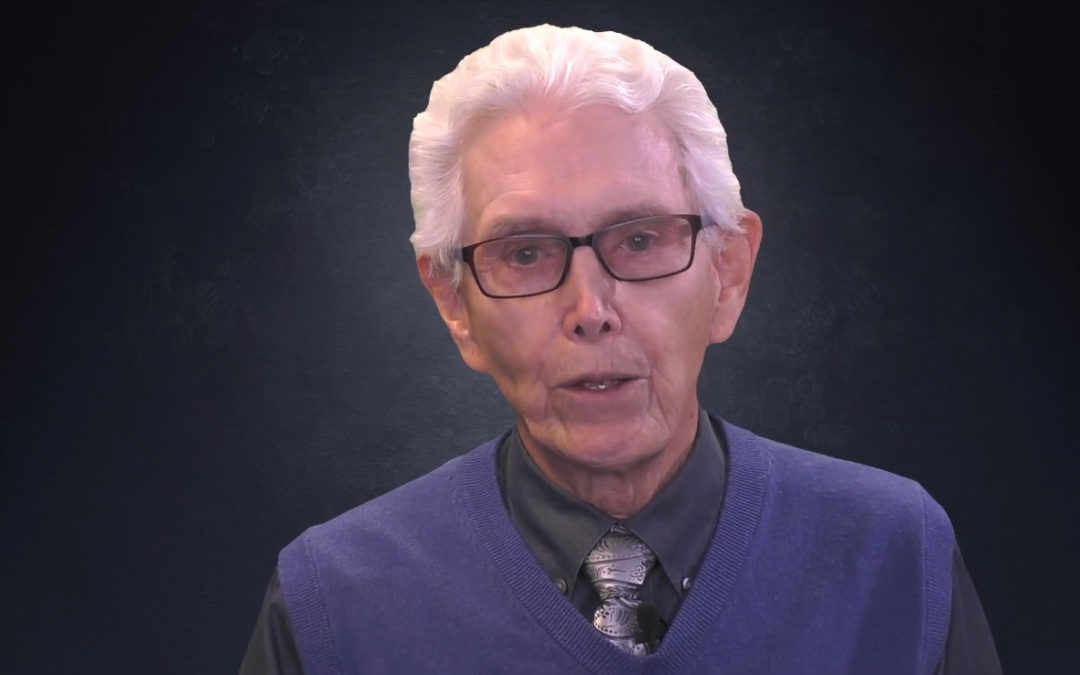TheStream.org by Aliya Kuykendall, published on May 7, 2019
Is there a better treatment for gender confusion than hormones and surgeries? Walt Heyer sheds light.
I recently had a conversation on Twitter with a person who identifies as a trans-woman. At one point, I said there might be a better way to help people in his position. One that doesn’t involve hormones and surgery. He said I was referring to conversion therapy. Conversion therapy is dangerous, he said. And if I could honestly recommend it to anyone, I am dangerous.
The exchange left me with a lot of questions. So I took my questions to Walt Heyer. Heyer is a man who formerly identified as a woman. He now provides support to people who regret their sex change.
He knows first-hand what it feels like to want to be a woman. And it’s not just his own story he knows. He’s received emails from hundreds who realized their transition wasn’t delivering all that it promised.
Why Walt Heyer Transitioned, and Then Detransitioned
First I wanted to know more of his story. Instead of retelling it, he directed me to the page where he published it: I Was a Transgender Woman. I recommend you read the whole thing. It’s very informative and not too long.
To summarize, Heyer’s journey with transgenderism started at age 4. His grandmother made him a purple chiffon dress. “That dress set in motion a life filled with gender dysphoria, sexual abuse, alcohol and drug abuse, and finally, an unnecessary gender reassignment surgery. My life was ripped apart by a trusted adult who enjoyed dressing me as a girl.”
For more on Walt Heyer, see I used to be transgender, I wish I had been told about these risks before gender surgery, and We are manufacturing transgender kids.
Starting at age 9, Heyer endured sexual abuse at the hands of his uncle. The dress and the sexual abuse left him insecure about his identity as male. As an adult, Heyer began cross dressing and became an alcoholic. He sought out a prominent gender psychologist. The doctor’s prescription? Gender surgery. At age 42, Heyer underwent gender reassignment surgery. He also had his sex legally changed. Now his birth certificate, drivers licence and social security card said “female.”
These measures worked. He felt happy … but only for a while: “It’s hard for me to describe what happened next. The reprieve provided by surgery and life as a woman was only temporary. Hidden deep underneath the make-up and female clothing was the little boy carrying the hurts from traumatic childhood events, and he was making himself known. Being a female turned out to be only a cover-up, not healing.”
Another gender psychologist told him he would feel better over time in his new female identity. Instead, he sank deeper into depression and alcoholism. He had suicidal thoughts.
A New Path
An alcohol recovery meeting set him on a new path. Heyer entered a university program to study the psychology of substance abuse.
A medical doctor Heyer met along the way recognized in him the signs of a dissociative disorder. Several psychologists agreed. “It was maddening. Now it was apparent that I had developed a dissociative disorder in childhood to escape the trauma of the repeated cross-dressing by my grandmother and the sexual abuse by my uncle,” he says.
That should have been diagnosed and treated with psychotherapy. Instead, the gender specialist never considered my difficult childhood or even my alcoholism and saw only transgender identity. It was a quick jump to prescribe hormones and irreversible surgery. Years later, when I confronted that psychologist, he admitted that he should not have approved me for surgery.
After eight years of living as Laura Jensen, Heyer began the process of accepting his male identity again. In a video interview he explains more about his healing process.
Here is our interview, lightly edited for clarity:
Heyer’s Experience in Helping People Find Answers
How did you begin the work of helping people detransition?
We started a website sexchangeregret.com in 2009 to see if there were others who had regret just as I did. Then slowly I began helping them understand they are not alone. I became a friend that would provide them comfort and support and guidance if they requested it. I would suggest they contact medical professionals during this journey toward restoration. Some were people of faith and some were not.
How many people have contacted you wanting help? How many have you helped?
Hundreds of transgender-identifying people have asked for help over the last 10 years — most of them in the last 4 years. It takes several months to well over a year to get to the point of detransitioning. Many of them do not detransition. Detransitioning is difficult for some because of a career. Or perhaps they cannot face the idea of explaining to everyone that changing genders was the biggest mistake of their life. Also many do not detransition because of an untreated sexual fetish and prefer to identify as transgender to avoid admitting to a sexual fetish.
The most important thing is helping the individual understand why they identified as transgender in the first place. My book Trans Life Survivors has several stories about regret and detransitioning told by the individual themselves.
Underlying Causes of Gender Confusion
How do you help people address the underlying causes of their transgenderism?
Identifying the causes requires knowing when the “onset” occurred and the desire emerged to identify in the opposite gender/sex. The list of causes is very extensive. The short list is: sexual abuse, emotional abuse, psychical abuse, early sexualization via pornography, early childhood cross dressing, the death of a parent, alcoholic or mentally-ill parents, horrible foster care.
And, today, chat rooms bring about rapid onset of trans-identified individuals in their teens. It’s way to “fit in” with the current social culture.
What do you find are the reasons why they want to detransition?
They realize they never really “changed genders” and depression returns. The typical “transgender life burn out” comes between 5 and 12 years. However, I have had cases where they have regret after 3 weeks or as much as 30 years. Here’s one of my articles: Regret Isn’t Rare: The Dangerous Lie of Sex Change Surgery’s Success.
Understanding “Conversion Therapy” and Finding Real Help
What is conversion therapy? Why does it have such a bad name?
The term “conversion therapy” is a political term used to attach the “boogie man” to anyone who is helping people identify the comorbid disorders that are causing them to act out as a transgender. Many men who identify as transgender are suffering from autogynophelia and transvestic fetish disorders. Others suffer from body dysmorphia, bipolar, dissociative and separation anxiety. All result in depression.
My “conversion therapy” took place in the office of my therapist who spoke softly, asking questions as I responded. No rubber hoses, no shock therapy, no medication. Just good old fashion talk therapy for several months.
As a child I was emotionally abused by cross dressing and sexually abused. All required time to explore and forgive the ones who hurt me. That is what they call “conversion therapy.” They just do not want them getting the help they need, sadly. My article: 50 Years of Sex Changes, Mental Disorders, and Too Many Suicides
Does the medical community affirm psychotherapy for gender dysphoria?
The medical community just takes a “referral letter” from therapists, social workers and others to perform surgery. A surgeon once told my pastor, “We do the surgery and hope the poor sap a good diagnosis from the therapists.”
If the reader has a loved one who identifies as transgender or has gender confusion, what should they do to help their loved one?
Run away from LGBTQ therapists. It is most important to identify what caused them to start thinking they had gender dysphoria. Start by going through the list shown in my answer above and find an underlying event or cause.
People are not born transgender. It is a developmental behavioral issue. Simply finding good, sound, effective psychotherapy to diagnose the comorbid disorder and following with effective long-term treatment is all that is needed. Hormones and surgery are not required.
Reprinted from theStream.org. Read the article at theStream.org.

